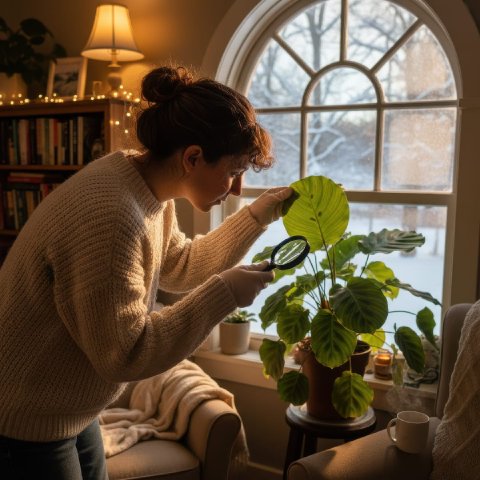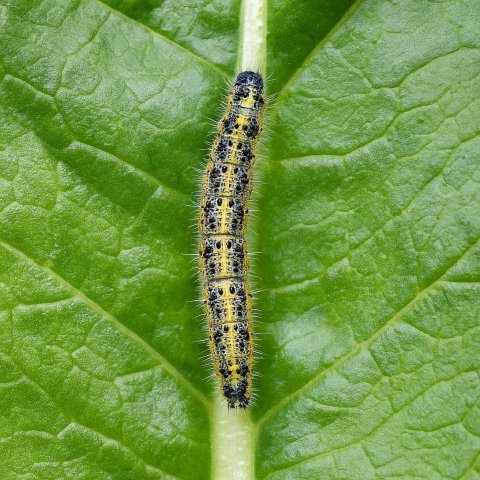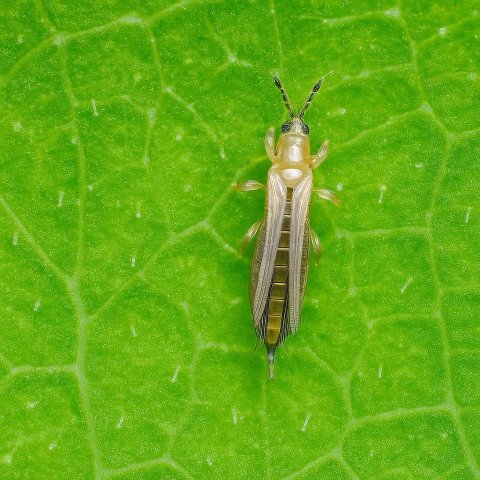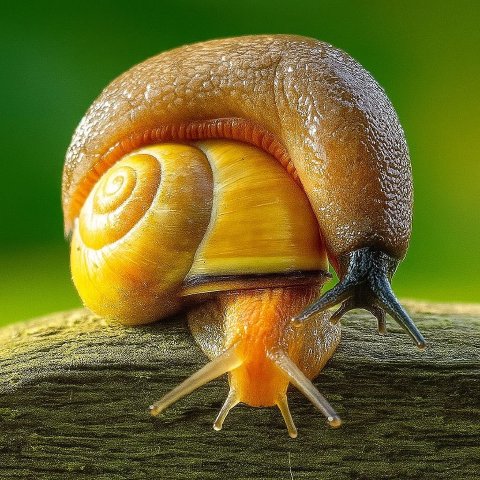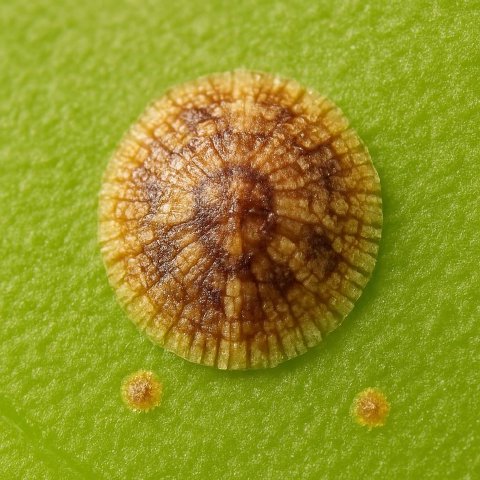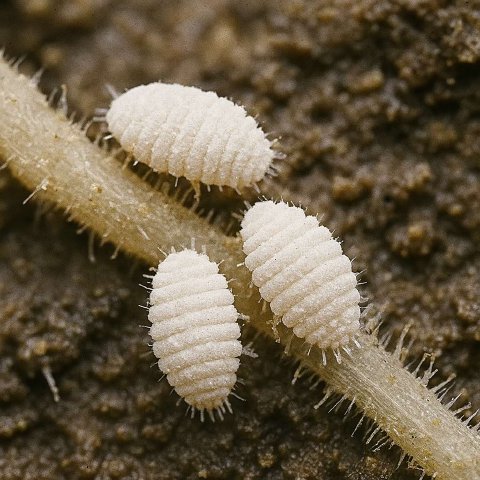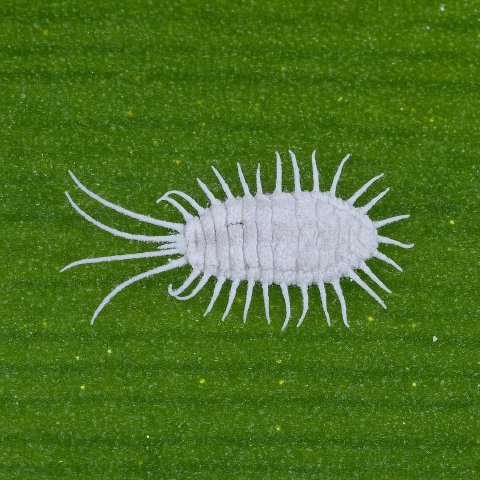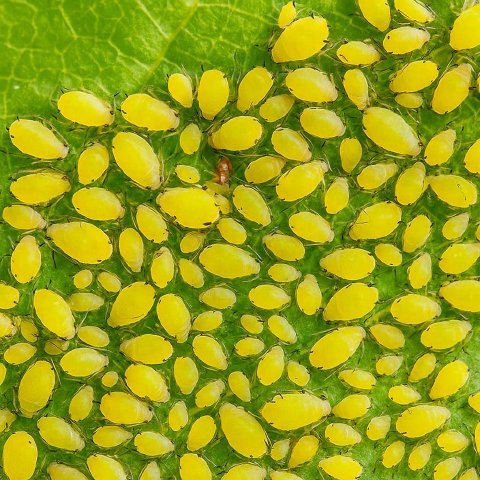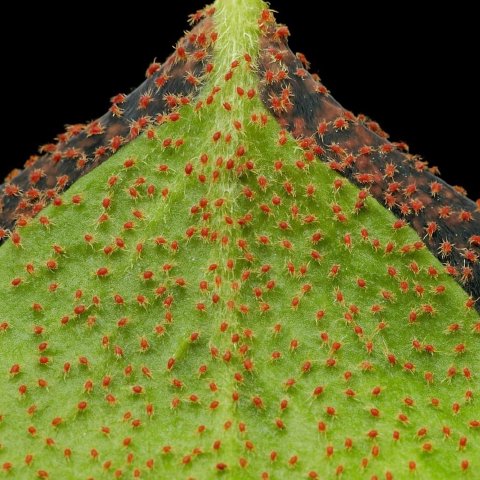🪴 In This Guide 🪴
🔎 What Are Whiteflies? A Closer Look
Understanding the Pest
Whiteflies are small, sap-sucking insects that are closely related to aphids and mealybugs. The adults have waxy white wings and a triangular shape, which is why they are often mistaken for tiny moths.
They go through a complete life cycle on the plant. Adults lay tiny eggs on the undersides of leaves. These hatch into immobile, scale-like nymphs that feed on sap before pupating and emerging as the familiar flying adults. This entire process can happen in as little as three weeks, allowing their population to explode quickly.
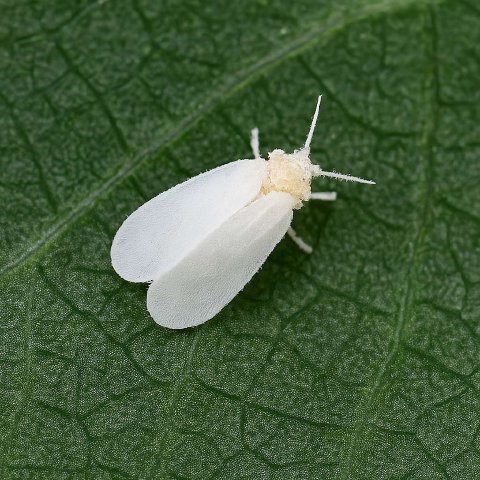
How to Identify Whiteflies: Signs & Symptoms
Their presence is often obvious once you know what to look for.
- Visible Insects: The classic sign is a swarm of tiny (1-2mm), white, winged insects that fly up in a cloud when the plant is disturbed.
- Common Hiding Spots: They almost always cluster on the undersides of leaves, especially near the top of the plant. You will also find their translucent, flattened nymphs there.
- Leaf Damage: As they suck sap, they cause leaves to turn yellow, appear mottled, and eventually wilt or drop off.
- Sticky “Honeydew”: Like their relatives, whiteflies excrete a sugary, sticky substance that can make leaves look shiny and feel tacky to the touch.
- Sooty Mold: The sticky honeydew can lead to the growth of a black, dusty fungus called sooty mold, which blocks light and is unsightly.
🤔 What Causes a Whitefly Infestation?
How Did They Get Inside?
Whiteflies are skilled infiltrators, often arriving in your home through a few common routes.
- New Plants: This is the #1 way they get in. A new plant from a nursery or garden center can carry eggs, nymphs, and adults.
- Open Windows & Doors: Adult whiteflies can easily fly in from outdoors, especially if you have an infested plant in your garden or on your patio.
- Stressed Plants: They are particularly attracted to plants that are stressed, especially those with tender, over-fertilized new growth. They thrive in warm, sheltered environments with poor airflow.
🌿 How to Get Rid of Whiteflies: A Step-by-Step Treatment Plan
Step 1: Isolate the Plant IMMEDIATELY
Since adult whiteflies can fly, this is the most critical first step. Move the infested plant to a separate room, far away from all other houseplants, to prevent them from spreading.Step 2: Remove the Adults
You need to reduce the number of flying adults to stop the egg-laying cycle.
- Use a Vacuum: A small, handheld vacuum is a great tool. Carefully go over the plant, holding the vacuum nozzle a few inches away to suck the flying adults out of the air and off the leaves. Empty the vacuum outside.
- Set Yellow Sticky Traps: Whiteflies are highly attracted to the color yellow. Place several sticky traps in the pot and around the plant. This is essential for catching the adults and monitoring the infestation.
Step 3: Treat the Eggs & Nymphs
After dealing with the adults, you must treat the foliage to kill the immobile stages. Repeat this every 4-5 days.
- Rinse the Plant: Take the plant to a shower and use a strong spray of lukewarm water to blast the undersides of the leaves, washing away many eggs and nymphs.
- Insecticidal Soap: This is one of the most effective treatments. It must make direct contact to kill the soft-bodied nymphs. Spray the entire plant, focusing intensely on the undersides of every single leaf until it is dripping wet.
- Neem Oil Solution: Neem oil works as a repellent and suffocant, and also disrupts their growth.
- Recipe: Mix 1 teaspoon of pure, cold-pressed neem oil and ½ teaspoon of mild dish soap in 1 quart of warm water.
- Application: Shake well and spray all plant surfaces, especially the undersides of leaves.
🛡️ How to Prevent Whiteflies from Coming Back
Proactive Plant Care
- Quarantine All New Plants: Keep new plants isolated for at least four weeks to ensure they are pest-free before introducing them to your collection.
- Inspect Before You Buy: When at the store, gently shake a plant to see if any whiteflies fly up. Check the undersides of the leaves.
- Use Sticky Traps for Monitoring: Keeping a yellow sticky trap in your pots is a great early warning system for many flying pests.
- Wipe Leaves Regularly: A routine cleaning with a damp cloth can remove eggs and nymphs before they become a problem.
